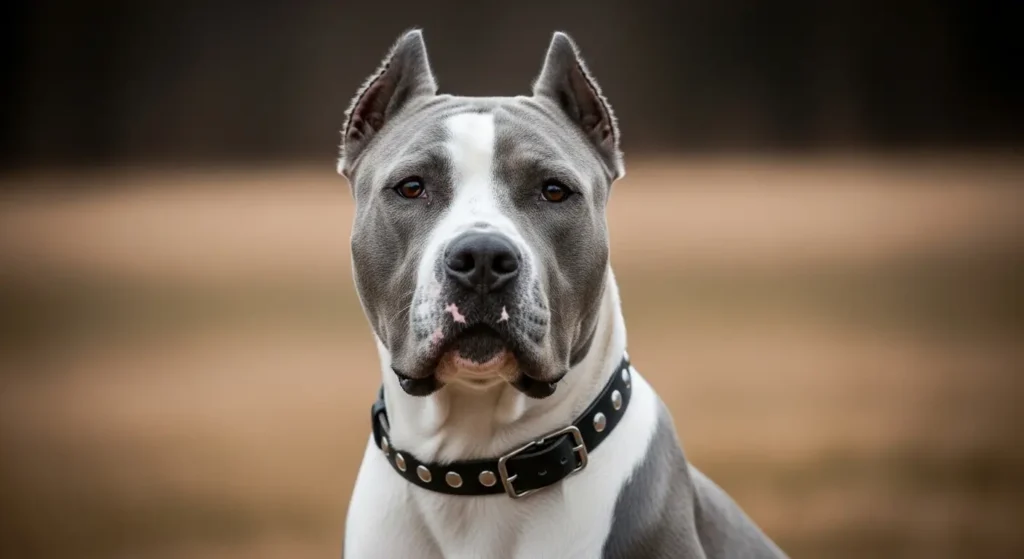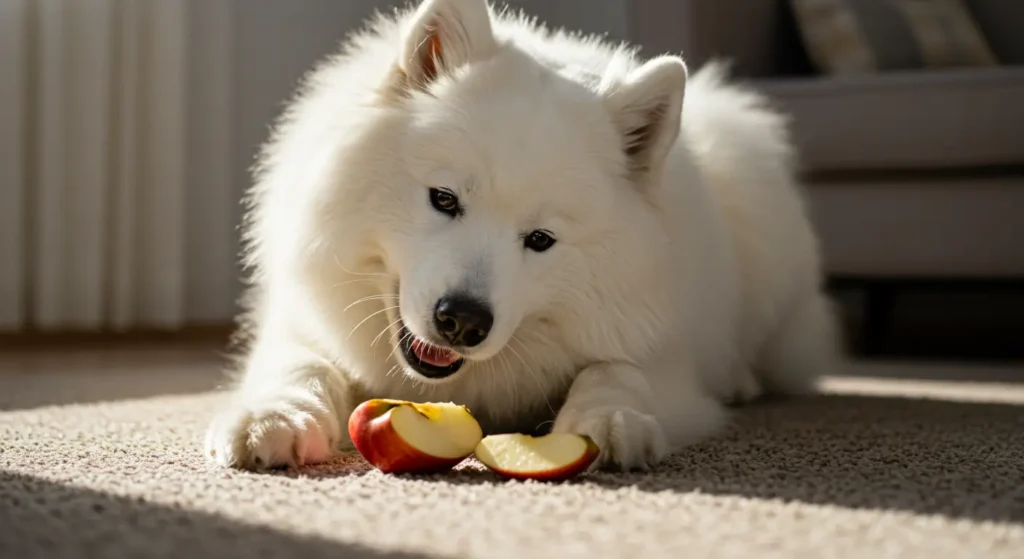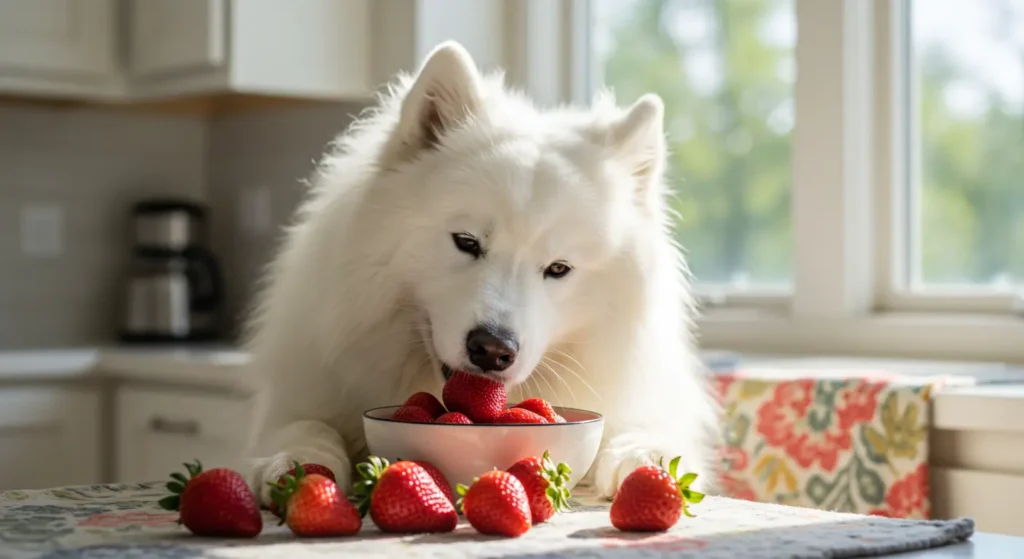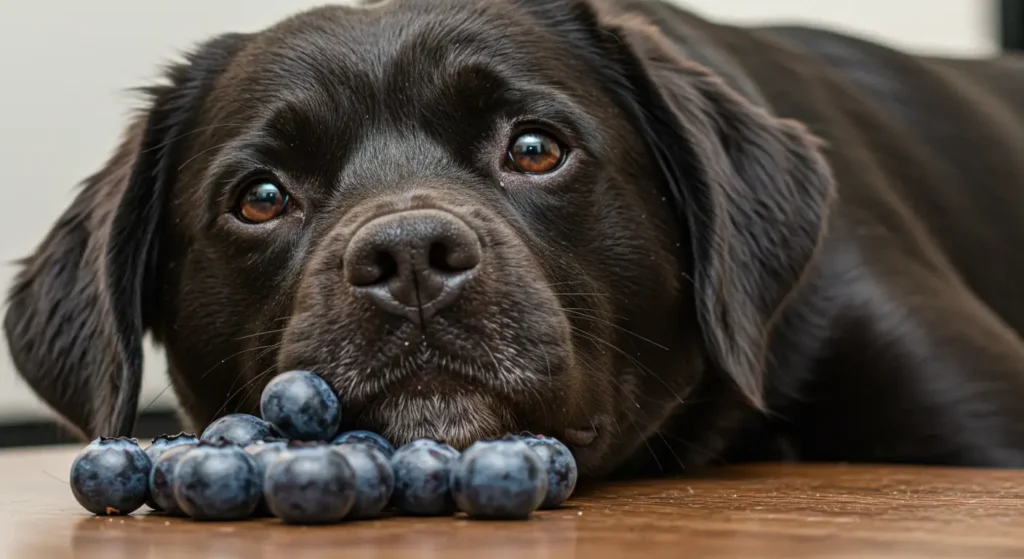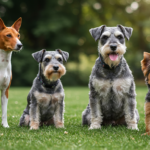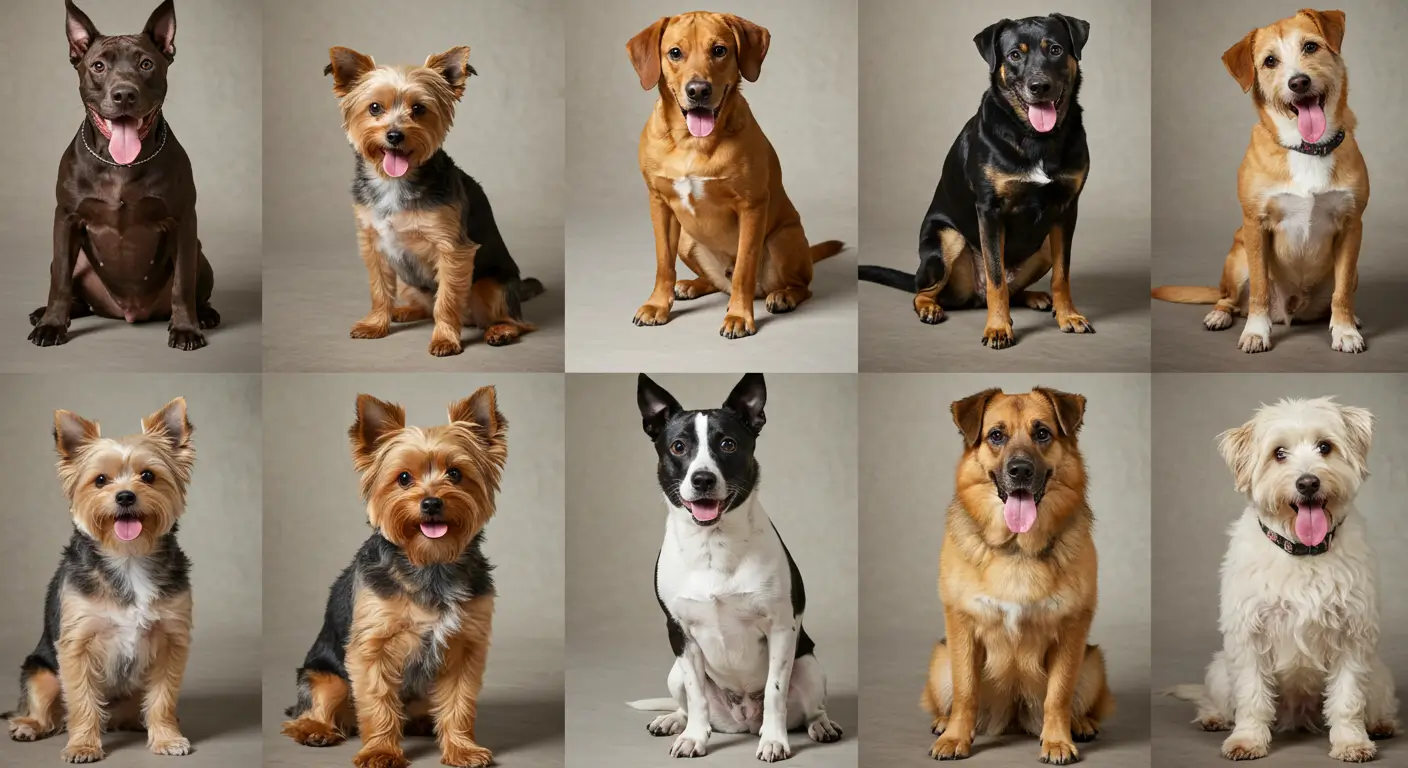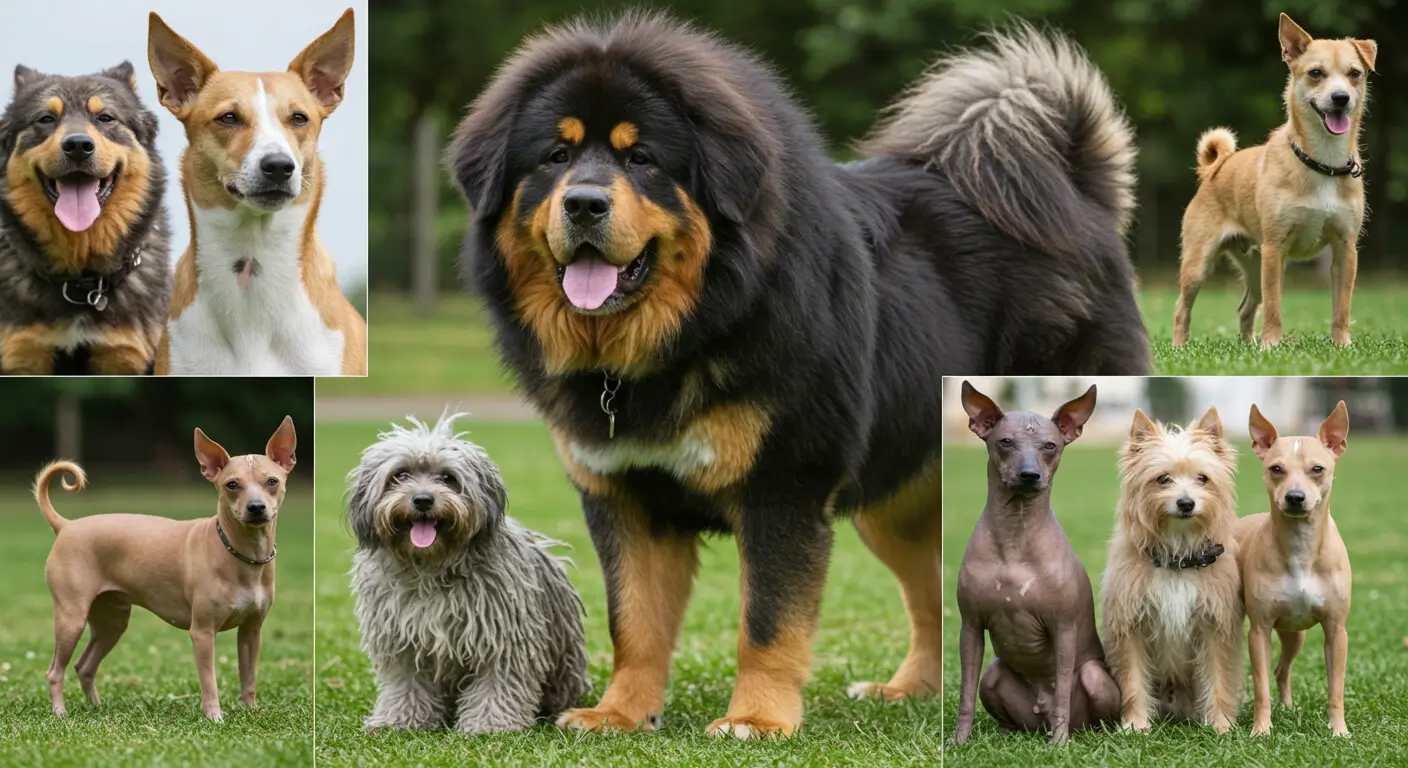How to Train Irish Dogs: 7 Proven Techniques
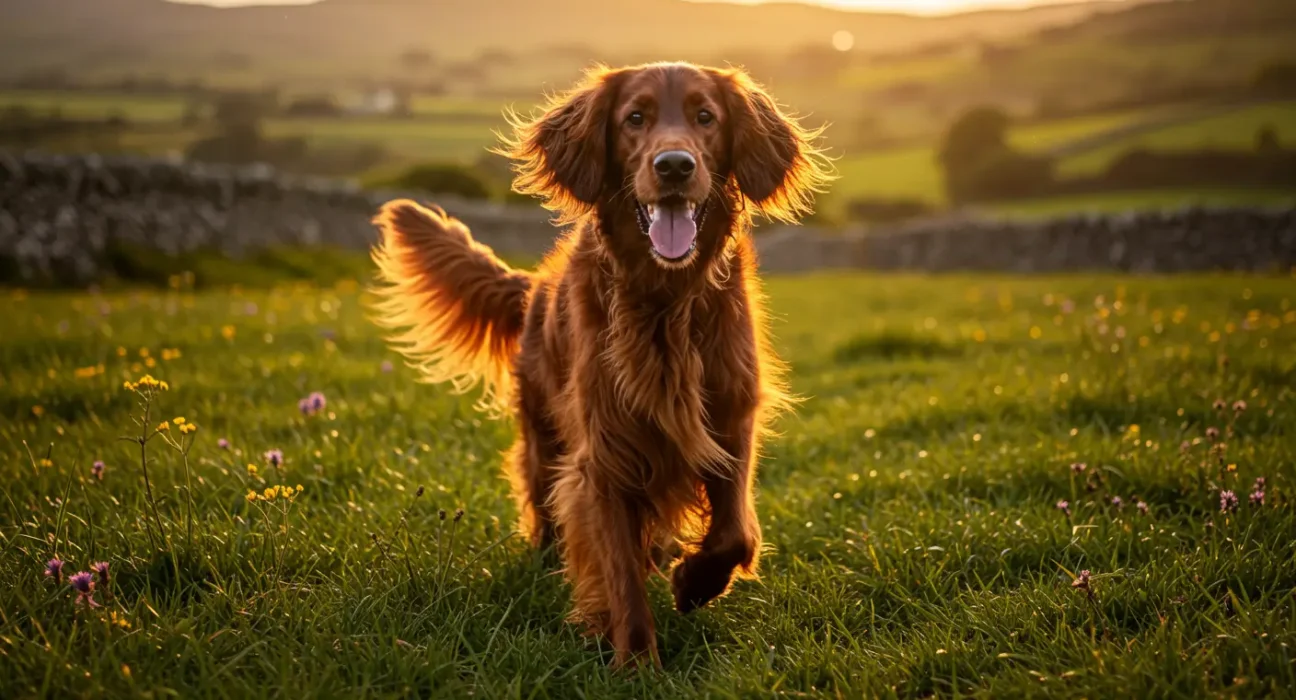
Irish dogs are some of the most loyal, energetic, and intelligent companions you can have. Whether you’re raising an Irish Setter, an Irish Wolfhound, or any other breed from the Emerald Isle, training them is key to ensuring they grow into well-behaved and happy pets. Training isn’t just about teaching commands—it’s about building trust, understanding their unique personalities, and creating a bond that lasts a lifetime. If you’ve ever wondered how to train Irish dogs effectively, you’re in the right place! In this post, we’ll explore seven proven techniques that will help you bring out the best in your furry friend while keeping things fun and stress-free.
- Understanding the Temperament of Irish Dogs
- Technique 1 – Positive Reinforcement
- Technique 2 – Establishing a Routine
- Technique 3 – Socialization Skills
- Technique 4 – Leash Training for Irish Dogs
- Technique 5 – Mental Stimulation Through Games
- Technique 6 – Addressing Behavioral Issues Early
- Technique 7 – Professional Guidance When Needed
- Tips for Long-Term Success with Irish Dogs
- Conclusion
Understanding the Temperament of Irish Dogs
Before diving into training methods, it’s important to understand what makes Irish dogs special. These breeds are known for their high energy levels, intelligence, and strong sense of loyalty. For example, Irish Setters are playful and thrive on attention, while Irish Wolfhounds are gentle giants with a calm demeanor. Knowing your dog’s temperament helps tailor your approach to training. For instance, if you have a hyperactive Irish dog, shorter but frequent training sessions may work better than long ones. By understanding these traits, you can set realistic expectations and create a positive learning environment for your Irish dogs.
Technique 1 – Positive Reinforcement
One of the most effective ways to train Irish dogs is through positive reinforcement. This technique involves rewarding good behavior to encourage repetition. Think of it as giving your pup a gold star for doing something right! Rewards can include treats, verbal praise, or even a favorite toy. The key is to reward immediately after the desired action so your Irish dog connects the behavior with the reward. Consistency is crucial here—make sure everyone in the household uses the same commands and rewards. With patience and practice, positive reinforcement can transform even stubborn Irish dogs into obedient companions.
Technique 2 – Establishing a Routine
Irish dogs thrive on structure, and having a consistent routine can make all the difference in their training journey. A predictable schedule helps reduce anxiety and sets clear boundaries for your pet. Start by planning regular times for meals, walks, playtime, and training sessions. For example, feeding your Irish dog at the same time each day teaches them when to expect food, which minimizes begging or disruptive behavior. Similarly, daily exercise not only burns off excess energy but also keeps them mentally sharp. Remember, routines aren’t just for convenience—they provide stability that Irish dogs crave.

Technique 3 – Socialization Skills
Socialization is another critical aspect of raising well-rounded Irish dogs. Early exposure to different environments, people, and animals helps them become confident and adaptable adults. Begin by introducing your Irish dog to new experiences gradually. Take them to parks, invite friends over, or enroll them in puppy classes where they can interact with other dogs. Keep these interactions positive and avoid overwhelming them with too much too soon. If your Irish dog seems shy or fearful, take small steps and reward calm behavior. Proper socialization ensures your dog grows up friendly and comfortable in various situations.
Technique 4 – Leash Training for Irish Dogs
Leash training is essential for managing your Irish dog during walks and outings. Many Irish dogs, especially larger breeds like Irish Wolfhounds, can be strong pullers if not trained properly. Start by letting your dog get used to wearing a collar or harness indoors before heading outside. Once they’re comfortable, introduce the leash and practice walking in a quiet area. Use short commands like “heel” or “walk nice” and reward them when they stay close. If your Irish dog starts pulling, stop walking and wait until they return to your side. With patience, leash training can turn chaotic walks into enjoyable strolls.
Technique 5 – Mental Stimulation Through Games
Mental stimulation is just as important as physical exercise for Irish dogs. Without enough mental challenges, they may resort to destructive behaviors like chewing furniture or digging holes. Interactive games and puzzles are excellent tools to keep their minds sharp. Try hiding treats around the house for a scavenger hunt or using puzzle toys that dispense snacks when solved. You can also teach tricks like “roll over” or “high five,” which engage both their body and brain. Not only does this strengthen your bond, but it also tires them out in a healthy way. After all, a tired Irish dog is a happy Irish dog!
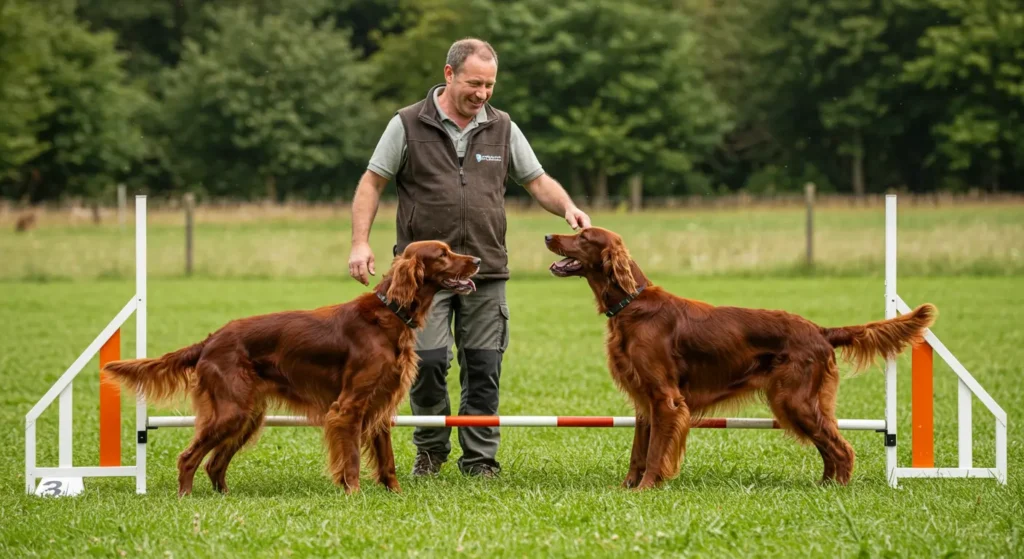
Technique 6 – Addressing Behavioral Issues Early
No matter how well-trained your Irish dogs are, behavioral issues can still arise. Common problems include excessive barking, jumping on guests, or chewing inappropriate items. The key is to address these issues early before they become ingrained habits. For example, if your Irish dog barks excessively, identify the trigger (like strangers approaching) and redirect their focus with a command like “quiet.” Similarly, discourage jumping by ignoring the behavior and rewarding calm greetings instead. Patience and consistency are vital when correcting bad habits. Don’t hesitate to seek advice from a professional trainer if needed.
Technique 7 – Professional Guidance When Needed
Sometimes, despite our best efforts, we may encounter challenges that require expert help. Hiring a professional trainer can be incredibly beneficial, especially for first-time owners of Irish dogs. Look for trainers experienced with your specific breed, as they’ll understand their unique needs and quirks. Group classes are great for socialization, while one-on-one sessions allow personalized attention. Remember, seeking professional guidance doesn’t mean you’ve failed—it shows you’re committed to providing the best care for your Irish dog. Investing in training now can save you headaches down the road.
Tips for Long-Term Success with Irish Dogs
Training Irish dogs is an ongoing process that requires dedication and love. To ensure long-term success, reinforce good behaviors regularly and avoid slipping into bad habits yourself. For example, always use consistent commands and rewards, even after initial training is complete. Regular exercise and mental stimulation remain important throughout their life. Additionally, maintain open communication with your vet to address any health concerns that might affect behavior. Above all, celebrate small victories along the way and cherish the journey of growing together with your Irish dog.
Conclusion
Training Irish dogs doesn’t have to be daunting—it can actually be one of the most rewarding experiences you share with your pet. By following these seven proven techniques, you’ll build a strong foundation of trust, respect, and love. From positive reinforcement to professional guidance, every step brings you closer to having a well-behaved and joyful companion. So why wait? Start implementing these tips today and watch your Irish dog flourish. And don’t forget to share your progress with us—we’d love to hear about your adventures with your four-legged friend!



